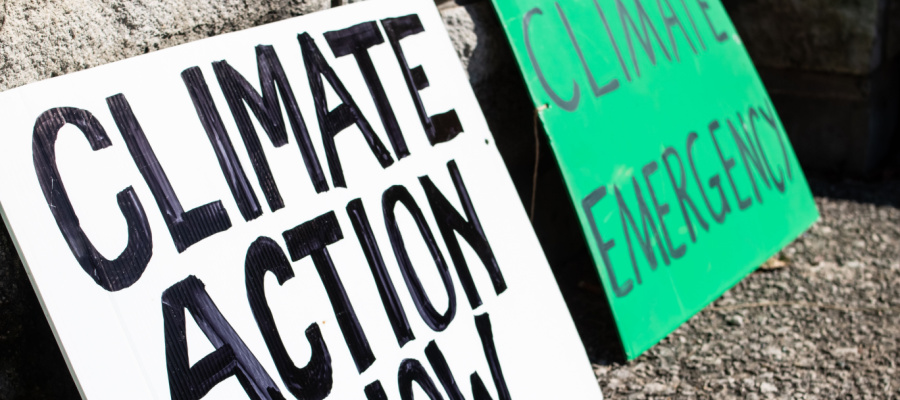BC LNG: Economic bonanza or environmental and economic nightmare?

Liquified Natural Gas (LNG) has been embraced by British Columbia’s government as a budding engine of growth for the provincial economy. Claims by industry lobby groups of tens of thousands of jobs and billions in government revenue make headlines. Is it true there really is a free lunch?
As a scientist who spent a career studying Canadian energy, including 32 years with the Geological Survey of Canada, I looked into these claims. The Canada Energy Regulator’s (CER) latest gas production forecast and Environment and Climate Change Canada’s (ECCC) most-recent submission on emissions to the United Nations Framework Convention on Climate Change provided a solid foundation from which to start. The free lunch claims quickly began to fall apart.
Natural gas is a finite, nonrenewable resource and most of the growth in Canadian production through 2040 is forecasted by CER to come from northeast BC. With conventional gas production in steep decline, production growth in BC over the past decade is entirely due to the advent of fracking (horizontal drilling combined with hydraulic fracturing of unconventional reservoirs) and associated high-levels of water consumption. As industry targets the lowest-cost resources first in order to maximize profits, producing them for LNG export means Canadians will pay more for domestic needs in the future.
Through the life of the three LNG projects with approved 40-year export permits, coupled with Canadian needs, 42,745 new wells would need to be drilled, increasing the current total more than ten-fold.
Gas production requires the construction of well pads, roads, seismic lines, gathering pipelines and other infrastructure. There were 3,847 active wells in the Montney deposit of northeast BC in December 2019, where most of the gas for LNG export would be sourced. Even without LNG Canada (which is currently under construction in Kitimat), 9,260 new wells will be needed to meet the CER forecast by 2040. Through the life of the three LNG projects with approved 40-year export permits, coupled with Canadian needs, 42,745 new wells would need to be drilled, increasing the current total more than ten-fold. The land area occupied by the infrastructure required to do this would quadruple from current levels to nearly 20 per cent of the Montney area. And all this assumes enough gas is there that can be economically extracted.
Producing gas also results in considerable greenhouse gas emissions. Emissions per unit of gas production can be calculated using production and emissions data from CER and ECCC. Projecting these forward based on the CER production forecast reveals that, even without LNG exports, BC’s emissions in 2050 from the oil and gas sector alone will exceed the province’s CleanBC plan target of 80 per cent below 2007 levels by 54 per cent. Added emissions from producing and liquefying the gas for LNG Canada would exceed the 2050 target by 160 per cent. If the three planned LNG export projects are built, the 2050 target would be exceeded by 227 per cent.
The tens of thousands of jobs claimed by the LNG lobby are contradicted by LNG Canada’s own website, which states between 300 and 450 permanent employees. Certainly, there will be thousands employed in building the terminal and pipeline, but these will only last two to three years, along with some jobs drilling the wells to produce the gas.
The economics of LNG are highly questionable. Even before the COVID-19 pandemic, LNG was trading in Asia at $3-5 per million BTU, whereas the Canadian Energy Research Institute has calculated a breakeven price for BC LNG landed in Asia of about $8. In April, LNG was trading at $2.16 in China.
Furthermore, royalties from gas production paid to the province have declined 84 per cent since 2005, despite the doubling of gas production.
BC’s emissions in 2050 from the oil and gas sector alone will exceed the province’s CleanBC plan target of 80 per cent below 2007 levels by 54 per cent. Added emissions from producing and liquefying the gas for LNG Canada would exceed the 2050 target by 160 per cent. If the three planned LNG export projects are built, the 2050 target would be exceeded by 227 per cent.
The day after a news release announcing my report was sent out, the Canadian LNG Alliance provided funding to the Conference Board of Canada to write a report that extolls the virtues of LNG. In less than three weeks, using information provided by the Canadian LNG Alliance, the Conference Board produced “A Rising Tide: The Economic Impact of B.C.’s Liquified Natural Gas Industry”, a 17-page report that claimed BC LNG would add 71,000 jobs per year and $94 billion to the province’s coffers—there was no mention of emissions or environmental impacts.
When Premier Horgan was asked about my report by CBC, he stated he hadn’t read it but believes BC will continue to lead the country in emission reductions. A fact-check reveals that BC’s emissions are up 5.65 per cent since 2005 (as of 2018) whereas Canada’s emissions are down 0.14 per cent.
It seems that narratives rule in the minds of politicians and LNG lobby groups, but the facts contradict them.
There is no free lunch.
This post is part of the Corporate Mapping Project, a research and public engagement project investigating the power of the fossil fuel industry in Western Canada, led by the University of Victoria, the Canadian Centre for Policy Alternatives (BC and Saskatchewan Offices) and Parkland Institute. This research is supported by the Social Science and Humanities Research Council of Canada (SSHRC)
Topics: Climate change & energy policy, Environment, resources & sustainability, Fracking & LNG

